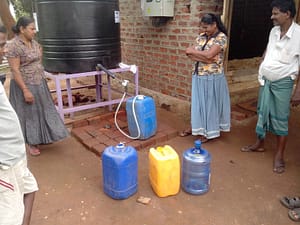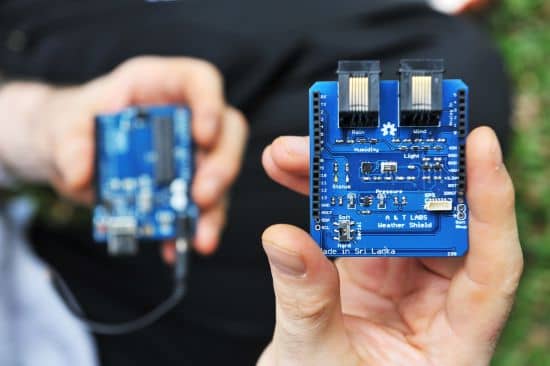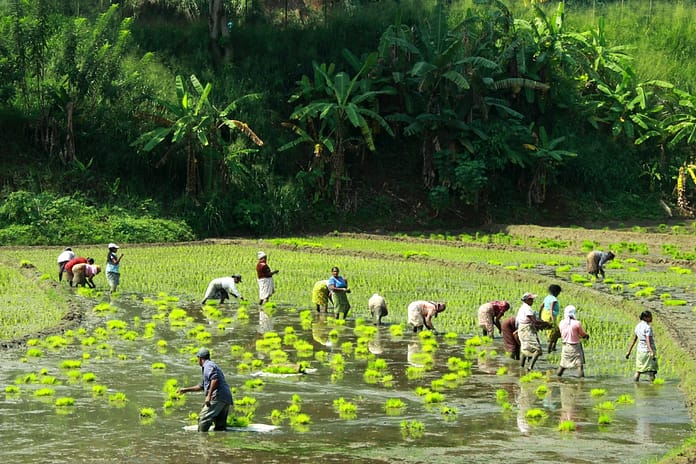In conversation with Harsha Kumar Suriyarachchi, former Vice Chairman, National Water Supply and Drainage Board
by Renuka Jeya Raj
Most experts agree that the presence of chemicals in groundwater has contributed to the prevalence of Chronic Kidney Disease of Unknown Origin (CKDu) in parts of Sri Lanka, although the exact combination of factors remains a mystery. Reverse osmosis (RO) technology is used to filter out chemicals and heavy metals in water. Some scientists feel that removing all the natural minerals from water could mitigate the spread of CKDu, but others fear it may give rise to new health issues. Lindha Langa spoke to Harsha Suriyarachchi, former Vice Chairman of the National Water Supply and Drainage Board, and asked him if he thought RO could make a difference to the epidemic:
“The tragedy of this country is that people don’t realize the gravity of the problem. CKDu was identified in Sri Lanka about 20 years ago, and experts from many schools of thought have held seminars and workshops, and conducted research over the years to determine its cause. However, nobody has yet found the cause or the cure,” said Suriyarachchi.
The cure could be closer than we think. According to Suriyarachchi, RO technology is an important breakthrough in filtering out the harmful chemicals in water. “The people who drink the water filtered by RO say their lives have improved, and that the impurities are less. The latest figures show that fewer or no new patients have been recorded with the disease in areas with RO machines,” he said.

The RO process removes toxic chemicals and heavy metals by straining the water through the tiny pores of a membrane. The diameter of each pore is one-tenth of a millionth of a millimeter (0.0001 microns), which is smaller than the molecules of toxic metals but larger than a molecule of water. In the normal osmosis process, the liquid moves naturally through a membrane from an area of low concentration to an area of high concentration. Reverse osmosis machines, as the name implies, reverse this process using high pressure pumps that force the water through the membrane, leaving the toxins behind.
Last year, on the instructions of His Excellency President Mahinda Rajapaksa, the Treasury allocated Rs 900 million to purchase RO machines for the areas worst affected by CKDu. Independent of this, The Trust has set up eight RO machines with the capacity to serve 1,000 families each at less than Rs 1 million for each machine. To date, RO machines have served about 15,000 families in Anuradhapura District, in Medawachchiya, which has the highest concentration of CKDu patients, and Medirigiriya and Padaviya, Giribawa, in Kurunegala District, and Padavi SriPura in the Northern Province.
The National Water Supply and Drainage Board, under the patronage of MInister of Water Supply & Drainage, Hon. Dinesh Gunawardena, has also set up about 12 RO plants at a cost of Rs. 2 million each. They aim to benefit 500 families each. Sri Lanka now has about 30-35 RO plants which have a daily capacity of about 60,000 liters for producing potable water, which was initially provided at a cost of between Rs. 3 and 4 per liter. “Our target was to reduce this cost below Rs 1 and I’m happy to say that we have achieved this,” says Suriyarachchi. “People suffering from CKDu are mainly from areas marginalized by the war, and they can’t afford to buy water at high prices. It was more or less a personal decision to bring down the price after a patient in Kidawarankulama told me that he had benefited from the water but couldn’t afford it. We have started supporting three Community-based Organizations (CBOs) at an all-inclusive cost of Rs. 0.50 per liter. They keep up to Rs. 0.50 as their profit and sell the water at Rs. 1 or less per liter. A liter of commercial bottled water is about 30 times more expensive.

It is the low value of Total Dissolved Solids (TDS) in the RO-filtered water – about 10 parts per million – that is curing the patients, since it reduces the burden on the kidneys. However, the Public Health Inspectors (PHIs) say that TDS should be increased because water should have a mineral content. They don’t understand that it is water with a high mineral content that is causing CKDu. TDS are minerals, salts and water-soluble metals.
However, maintaining the quality of the system is difficult. “Engineers were sent from India to train the people to operate the machines but, although they have become very competent, there is no mechanism to ensure that they continue to do it properly. Machine pressure and the monitoring meters must also be continuously monitored. Sri Lanka lacks the capacity to test water quality continuously. We should have online testing systems,” suggests Suriyarachchi.
Suriyarachchi sees tremendous potential for manufacturing RO plants in Sri Lanka. “The initial outlay is slightly expensive, but this cost could be reduced if made locally. The technology is advanced but production is fairly basic. About 300 plants could be produced for 300,000 families within three months. RO plants can also be exported to countries with a large sea base and little drinking water. This could create a new industry, it will generate more jobs and increase incomes,” he said.
The National Community Water Trust was set up by the Ministry of Water Supply and Drainage Board to empower rural communities, not only by protecting their right to clean and safe water but to also help them enjoy fundamental facilities such as health, education and sanitation. The Trust acts as a beneficiary to the 3,500 CBOs in the country that involve 4 million people.
Suriyarachchi is also a Trustee of the former National Community Water Trust, and former General Manager of the Water Resources Board. He is a chartered engineer.



